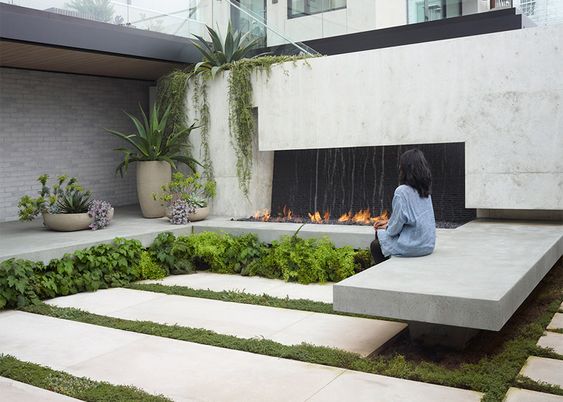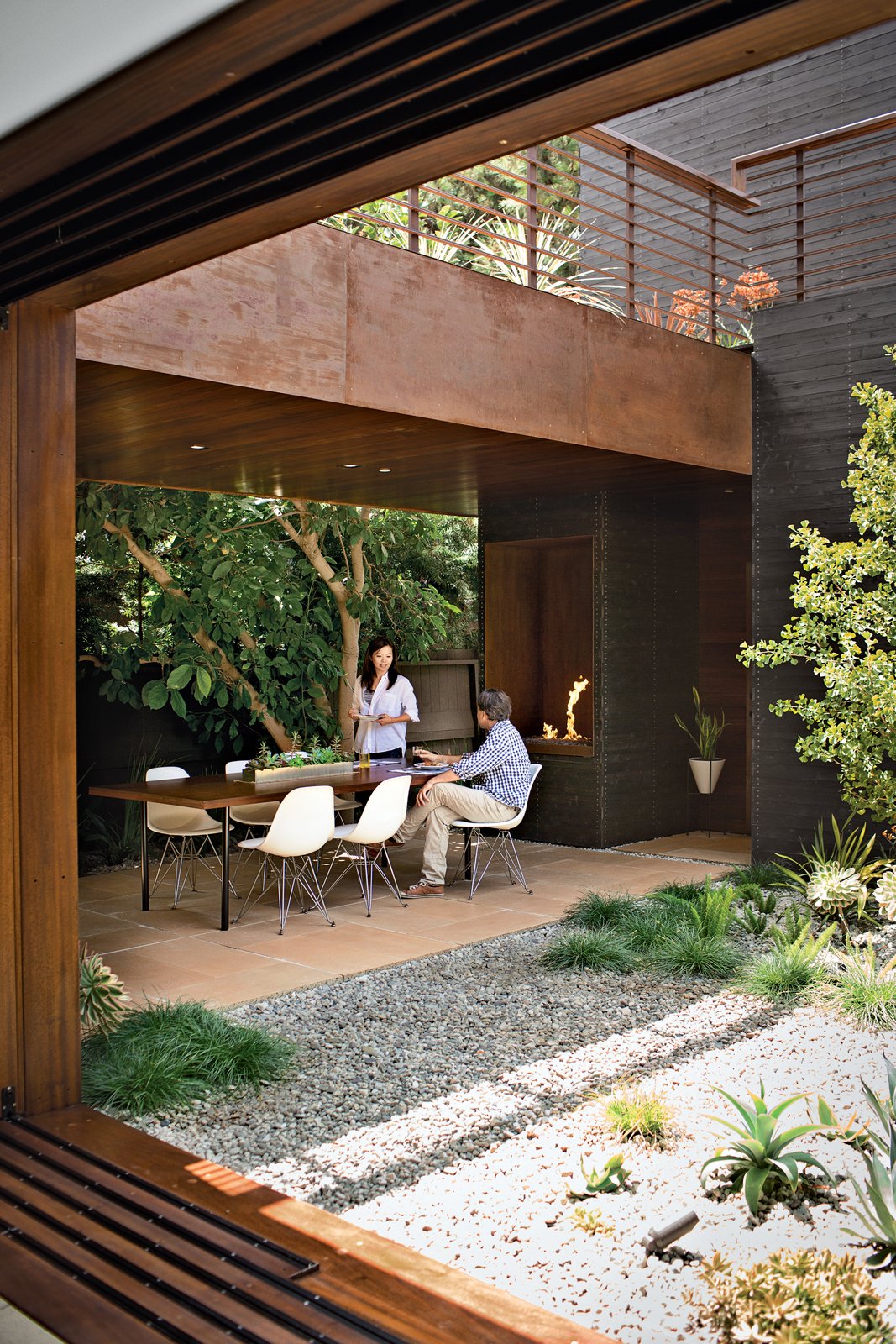FIVE EASY WAYS TO SPEND MORE TIME OUTSIDE
Spending time outside doesn’t always mean going for a bushwalk or planning to meet friends at the park. As great as these things are, they aren’t always achievable on a regular basis. But what is possible is snatching a few minutes to potter in the garden, read in the sun or cook on the barbecue. If you’re ready to spend more time outside, take a look at your daily habits and you might be surprised where you can find pockets of time to escape to your outdoor space.
There is a reason why we often crave time outdoors, and that’s because it’s good for us. Fresh air, sunshine and the presence of plant life calm the mind and have also been linked to improved memory retention, creativity and general wellbeing.
Even if your calendar doesn’t allow for long stretches of time outside, these simple hacks will lure you outdoors more often and create more balance in your lifestyle.
Butterfly House by Surfacedesign, Inc. Photography by Marion Brenner.
1. Use your outdoor space for the things you love
If you have an outdoor space at home but don’t feel compelled to use it, you’ll inevitably end up spending your leisure time indoors. If you love entertaining, then it makes sense to create an outdoor area where you can socialise with friends. Or if you’re a cook and don’t have space for an outdoor kitchen, even growing a few herbs will create a meaningful connection with your space.
Activities you can use your balcony, courtyard or garden for include:
Cooking
Gardening
Reading and relaxing
Children’s play
Entertaining
Creative hobbies
Decide how your outdoor space can enrich your lifestyle and make some changes accordingly. If, for example, you want a place to read and relax, you’ll likely get more enjoyment from the space if it’s furnished with an outdoor lounge rather than a dining setting.
Even the inclusion of something as simple as a side table to sit your morning coffee on can make your outdoor space better suited to your lifestyle.
Related: Entertaining in a small outdoor space
2. Rethink your daily habits
This open window seat creates a natural indoor/outdoor connection. Image via Homes to Love. Photography by Maree Homer.
If you only use your outdoor space when guests come to visit, you aren’t alone. Most people don’t think to go outside during the week. Life gets busy and it feels easier to eat dinner on the couch while catching up on Netflix.
But there may be other pockets of the day that you could be spending outside. We recently started having breakfast outside in our new outdoor area. It’s nice and cool at this time of morning and the simple ritual sets a lovely tone for the day.
From chatting on the phone to checking emails and stretching in the morning, there are a lot of ways to take your daily life outside. In fact, for activities such as emails and work, studies have shown that concentration can improve in a natural setting.
3. Address any privacy issues
Image via Bentley’s Guesthouse.
When you feel like the neighbours have a prime view of your living space, it’s only natural to want to stay away from prying eyes. Privacy issues are a common concern for people with balconies and courtyards in built-up areas.
You can create more privacy by:
Creating a vertical garden to muffle noise
Using screening plants such as hedges and bamboo
Installing permanent structures such as sliding screens, shutters or a shade canopy
When you feel more comfortable in your outdoor space, you’ll start to enjoy spending time outside again.
4. Fight back against the elements
Like privacy, the elements are another reason why you might choose to avoid spending time in your outdoor space. Too much sun, not enough light at night and wind are the main issues we see time and time again.
If there is a specific reason why you aren’t spending as much time outside as you’d like, look at your space to determine why. Let’s say you want to use the space for entertaining but it doesn’t have adequate lighting. By identifying this issue and addressing it, you can start using the area when and how it suits you.
Factors such as wind and sun protection are especially important considerations on rooftops and balconies, as these types of spaces are more exposed to the elements. Incorporating awnings, pergolas and wind barriers in these spaces will ensure you don’t let your precious outdoor space go to waste.
5. Create a connection between indoor and outdoor spaces
Spark Modern Fire
Image via dwell. Photography by Coral von Zumwalt.
If you’ve ever tried to make changes in your lifestyle, you’ll understand the importance of visual cues. If you want to start exercising regularly, for example, then having your exercise gear out and within eyeshot every morning is one of the most effective ways to stick to the new habit.
The same goes for getting outside and enjoying your outdoor space. If there’s a natural connection between your indoor and outdoor areas, you’re far more likely to make use of your garden, courtyard or balcony.
Ways to achieve this include:
Using the same or similar materials across indoor and outdoor spaces for continuity
Linking indoor and outdoor spaces with large windows and glass doors
Positioning plants so they’re visible from indoor spaces
Bringing nature inside with an internal courtyard
We recently renovated our home and garden, and as a result we’ve been spending so much more time outside. In fact, we now look for opportunities to head outside. Here’s a preview of our new garden.
For more, download your free ebook, Small Spaces, Big Ideas. It’s got all our favourite design and planting tips to get you inspired.





